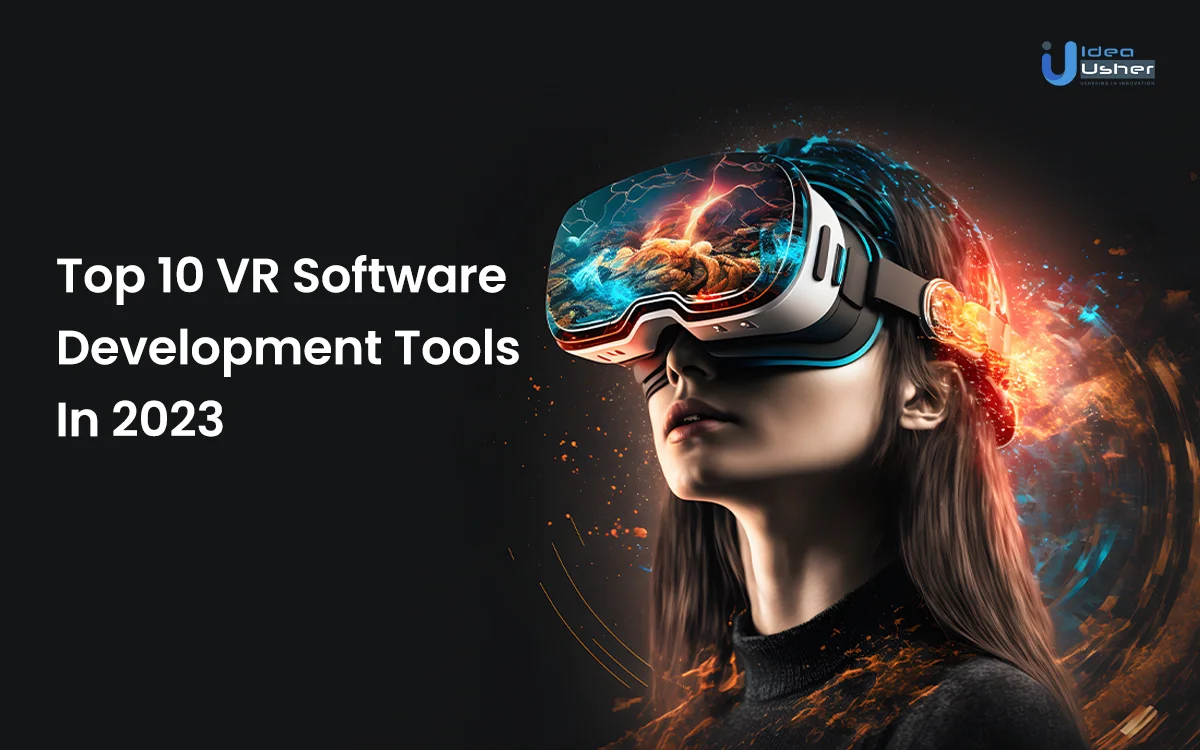Whether it is training simulations, game development, architectural visualization, or educational experiences, VR tools play a vital role in shaping the virtual reality landscape.
VR technology offers immersive and interactive experiences and has gained significant popularity in recent years. VR development tools enable developers to create immersive virtual experiences for their users and make extreme profits in the fast-growing VR market.
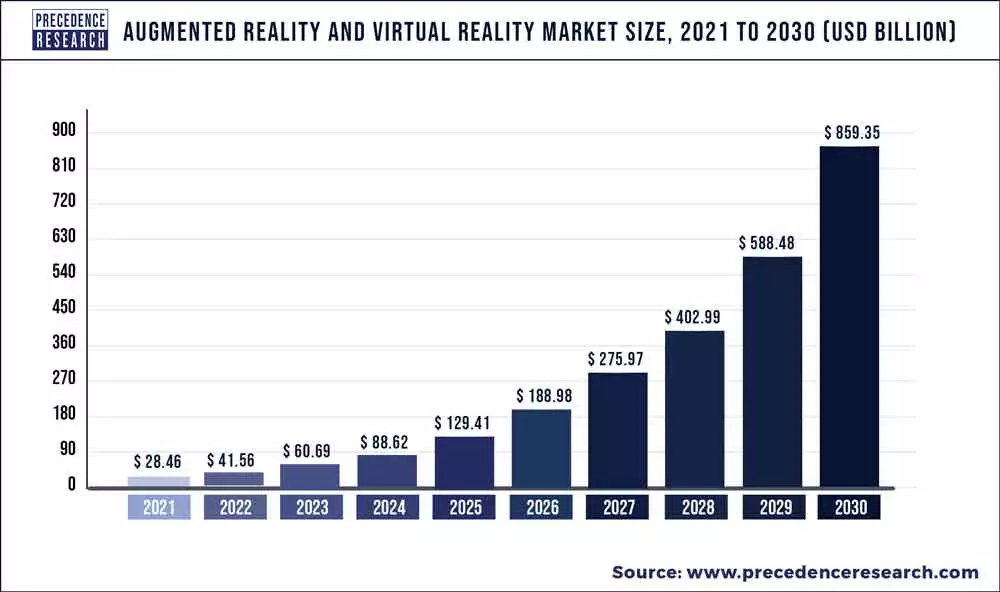
The above market stats indicate a greater opportunity for entrepreneurs to become profitable by investing in the VR market.
In this article, we will explore the best VR tools, their functionalities, and how they contribute to creating captivating and realistic virtual experiences with VR development.
What Is VR Technology?
Virtual reality is a computer technology that offers a simulated experience similar to the real world. The technology typically uses display devices and sensors to create an immersive experience and environment for the users.
The VR technology virtually transports users into a virtual world where a head-mounted display is used. The VR experience often includes auditory and haptic (touch-based) feedback to enhance immersion.
VR technology facilitates potential applications in various domains, including entertainment, gaming, education, training, simulation, healthcare, architecture, etc. Many industries use VR technology to train employees and enable remote collaboration and communications.
The capabilities and features of VR technology are constantly evolving, which further enhances the virtual experience for the users.
How VR Technology Works?
Virtual reality (VR) technology creates a simulated environment and allows users to experience and interact with VR headsets. The VR technology works in the following ways:
1. Visual display
The user applies a head-mounted display close to their eyes. These screens generate separate images for each eye, creating a stereoscopic effect stimulating depth perception.
The smooth and immersive visual experience depends on the resolution and refresh rate of the display used for delivering an immersive virtual experience.
2. Tracking systems
The VR technology tracks users’ head and sometimes body movements through sensors, infrared technology, or cameras.
By constantly monitoring user movements, VR technology generates a dynamic virtual reality environment, allowing users to look around and explore the virtual space naturally.
3. Input devices
The users utilize various input devices such as data gloves, handheld controllers, or body tracking sensors to enable VR devices to collect input data. The use of input devices enables users to navigate virtual space and manipulate objects and trigger actions within the VR environment.
4. Computer processing
Computer processing helps VR applications render complex virtual environments in real time. The system generates 3D objects, graphics, audio, and other elements of the VR environment at a high frame rate to maintain a smooth and enhanced virtual experience.
Moreover, the graphic processing unit (GPU) is crucial in rendering immersive and realistic visuals for its users.
5. Software and content
The VR software uses specialized game engines and VR development frameworks for creating 3D models, environment interactions, and behaviors that help VR programs stimulate a virtual world.
Later this virtual environment can be used in a real-world location, including simulations, games, educational experiences, virtual tools, and much more.
6. Immersive feedback
The system uses additional sensory feedback beyond visual and auditory cues to enhance the experience of the virtual world.
The feedback includes vibration or force feedback in addition to haptic feedback to simulate the sense of touch and spatial audio, which creates a 3D audio environment for matching user movements and positions within the virtual space.
By combining all these components and technologies, VR simulates the virtual world, which makes VR technology so immersive and compelling.
Use Cases Of VR Technology
Virtual technology has many use cases across various industries. Here are some examples of how VR is being used.
1. Gaming and Entertainment
Virtual reality offers an immersive gaming experience where players can be transported into virtual worlds, allowing them to interact with characters and objects.
2. Architectural Visualization
Designers and architects can utilize VR technology to create virtual walkthroughs of buildings and spaces. The virtual version of buildings and spaces helps clients experience and evaluate designs before construction begins.
3. Healthcare and Therapy
The healthcare industry can use VR technology for rehabilitation, pain management, and exposure therapy. Creating a virtual environment enables patients to treat their phobias and helps with pain distraction.
4. Training and Simulation
The use of simulation and training with VR is valuable across various industries such as the military, aviation, healthcare, etc. The simulation helps trainees to practice realistic scenarios and build skills in a safe and controlled virtual environment.
5. Education and Learning
Students can use VR technology to learn new things in an enhanced way by interacting with virtual environments and 3D models and understanding complex topics more easily.
6. Virtual Tourism
The tourism industry utilizes VR applications to enable its users to virtually explore travel destinations, historical sites, and cultural landmarks.
7. Sports Training and Analysis
The sports industry uses VR technology to simulate game situations and enable players to improve decision-making. Athletes can practice in virtual environments that closely mimic real-world conditions and help their coaches to analyze the player’s performance.
8. Art and Creativity
Artists and designers can use VR technology to create immersive digital art pieces, virtual installations, and sculptures by pushing the boundaries of traditional art forms.
9. Remote Collaboration
Many businesses and industries leverage the power of VR technology to bring collaboration in virtual spaces, sharing and manipulating 3D data, working together regardless of physical location, etc.
Top 10 VR Development Tools
VR facilitates businesses with many possible values. However, many valuable tools are available that developers can use for the creation of VR programs and software. The best tools for VR development are as follows:
1. Unity
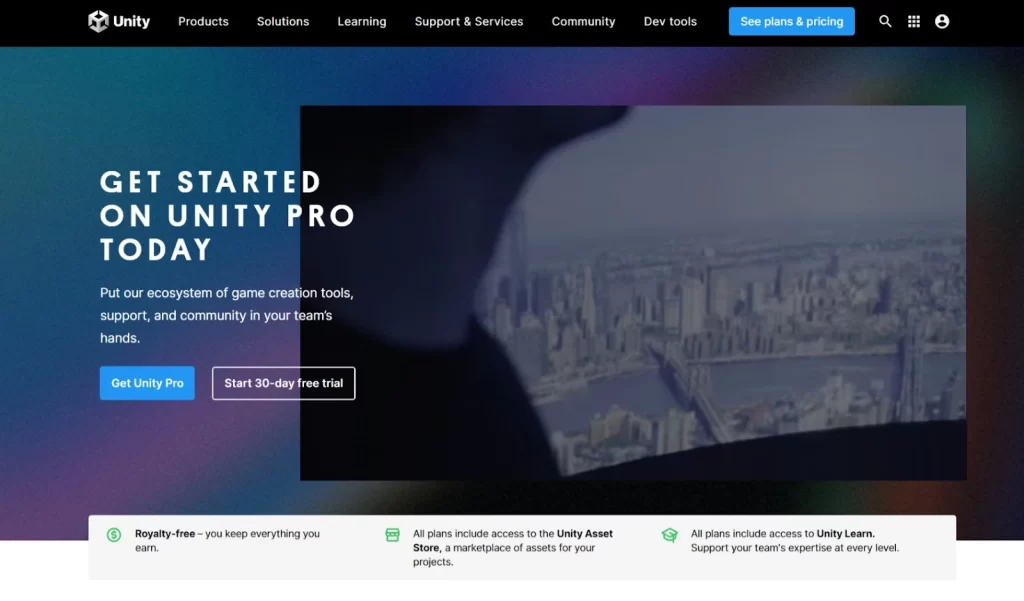
A famous platform for game development where users can also build VR solutions for many industries such as manufacturing, transportation, automotive, media, industry, engineering, construction, etc.
Unity is a cross-platform tool that facilitates the creation of VR content compatible with multiple platforms, including console, mobile, PC, and web.
The developers can leverage the various functionality of Unity tools, such as.
- A powerful editor for building Unity 3D VR assets;
- Artist and designer tools;
- CAD tools;
- Collaboration tools.
The developers can use Unity 3D to create advanced virtual reality systems with various VR headsets.
2. Google VR for Everyone
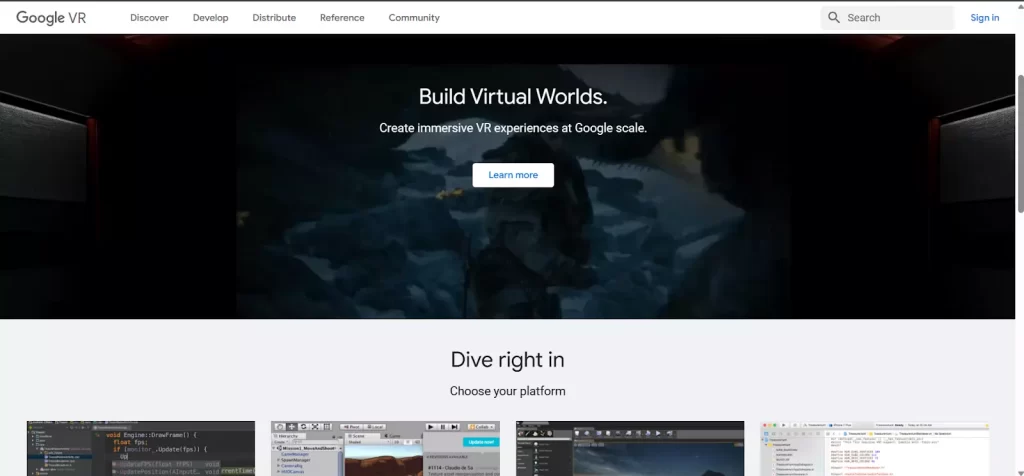
Google, a well-known technology giant, offers an immersive range of VR development tools developers can use to create an immersive virtual experience for their stakeholders.
The developers can utilize these tools to develop apps across multiple platforms, including Android, iOS, Unity, Unreal, and the web.
3. Amazon Sumerian
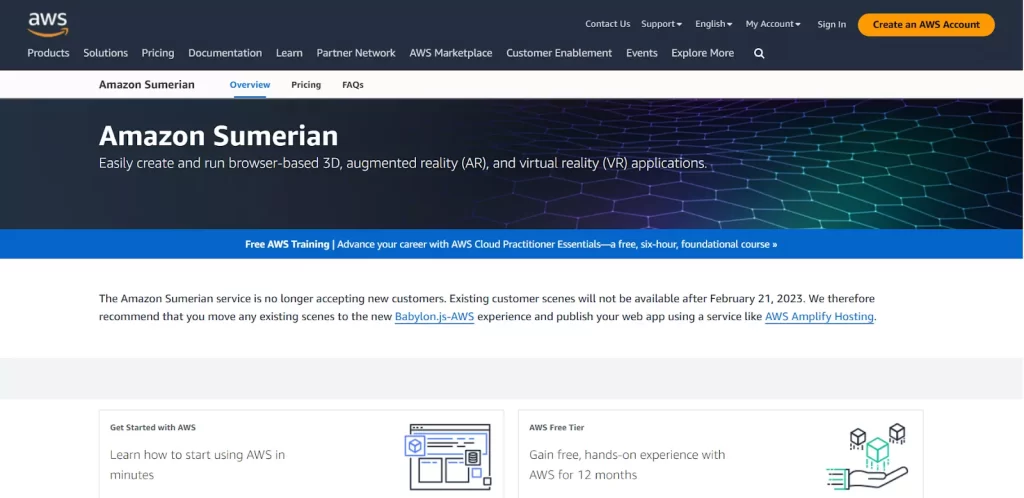
Amazon Sumerian is an ideal platform for developing and deploying high-quality virtual reality programs. The platform works with all popular VR platforms like Oculus Rift, Oculus Go, HTC Vive, Lenovo Mirage, and Google Daydream.
Moreover, the software and games built with Amazon Sumerian are compatible with popular mobile platforms such as Android and iOS.
The developers can utilize the powerful features of the Amazon Sumerian platform, such as.
- Sumerian editor;
- Asset management;
- Sumerian hosts;
- Logic scripting in the scenes you create.
4. Unreal Engine 4 (UE4)
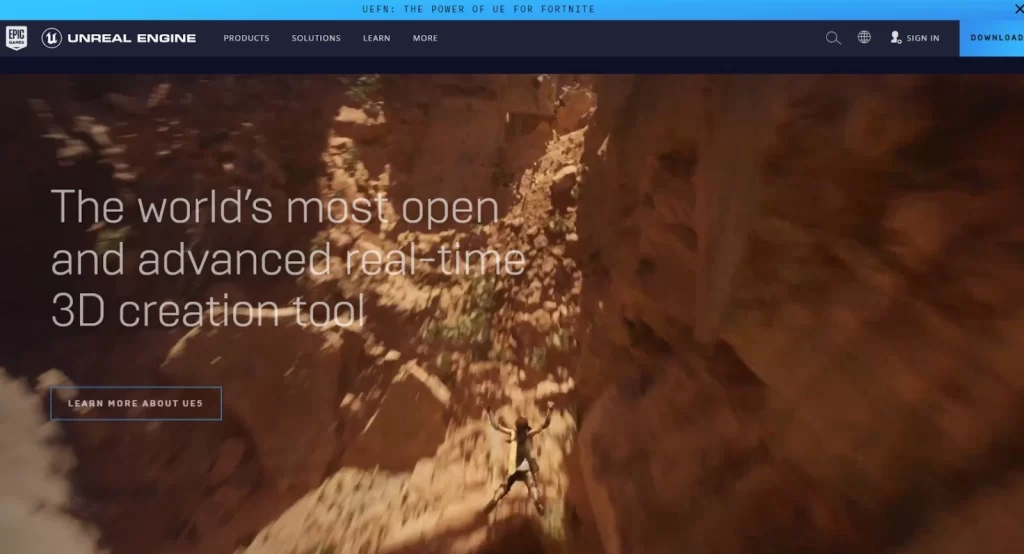
The UE4 offers a powerful set of VR development tools that developers can build and deploy software across various VR devices such as Sony, Samsung, Android, iOS, Google VR, etc.
Unreal Engine is an idol for various industries, including architecture, film, gaming, automotive, and transportation. The VR developers have complete freedom to create an immersive virtual world in addition to cutting-edge visuals.
The UE4 platform offers many features regarding VR development, such as:
- Any VR developer on your team may thoroughly examine the engine and learn how to utilize it thanks to its open access to its C++ source code and Python scripts.
- A versatile editor, real-time graphic rendering, and a multiplayer infrastructure are all features of UE4.
- You may easily make prototypes using the visual scripting tool Blueprint provided by UE4.
- Animation, a sequence, audio, a simulation, effects, etc., are simple to add.
5. Blender

Blender is a free and open-source 3D virtual suit ideal for virtual reality development. Developers can use this software to create high-quality animated content and robust virtual reality applications.
Moreover, the platform offers various development tools to facilitate’s game developers to develop apps that are easy to test and deploy across various platforms and devices.
The following features make Blender an ideal platform for VR development.
- Users can create a 3D pipeline with modeling, rigging, animation, simulation, rendering, and motion tracking.
- The platform supports video editing and the creation of VR video games.
- Developers can create specialized tools by leveraging the scripting power of Python programming language.
6. 3ds Max
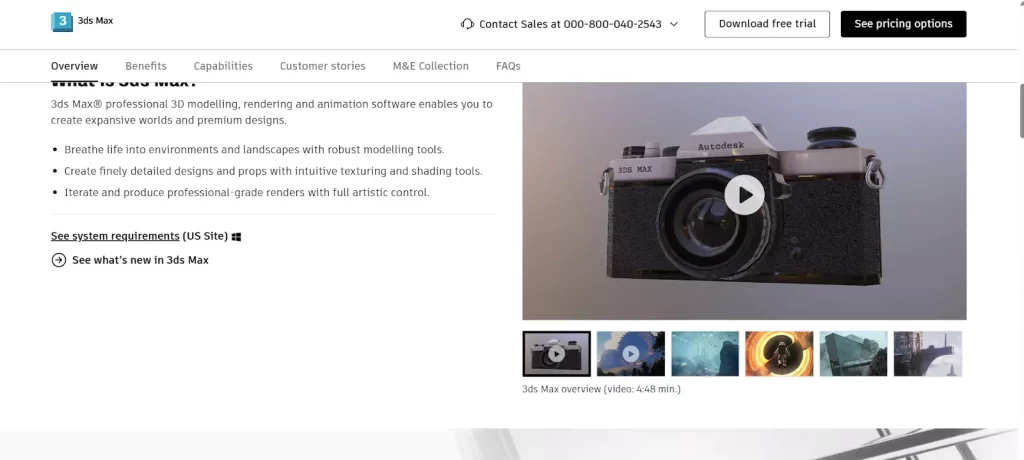
Another popular 3D modeling and rendering software from Autodesk that developers can use for designing visualizations and video games. The platform offers enormous features, such as.
- The creation of highly professional-quality 3D animations
- Efficient and flexible toolset to design high-quality 3D models.
- Various options to design effects and textures
- An impressive array of 3D rendering, pipeline, UI, workflow, 3D animation, and other capabilities with 3ds Max.
7. CRYENGINE
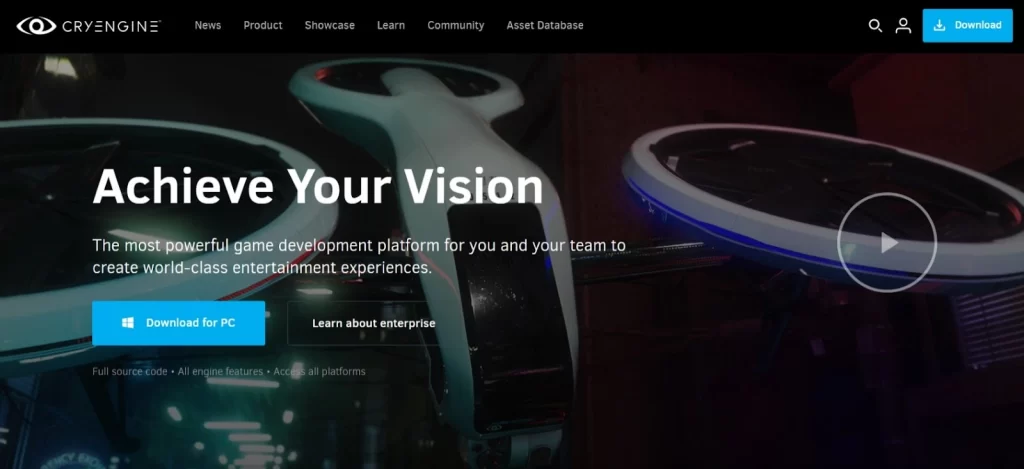
CryEngine is a robust choice for VR software development. The platform enables their developers to create virtual reality apps that can be deployed across popular VR platforms like Xbox One, PlayStation 4, Oculus Rift, etc.
The platform facilitates various features, such as
- Sandbox and other relevant tools for the easier creation of VR apps & games
- Built-in audio solutions
- Character development tools
8. SketchUp Studio
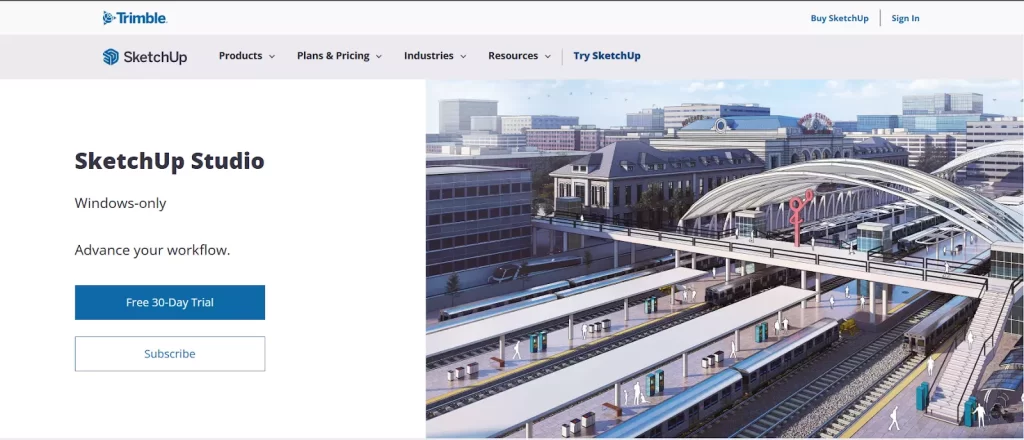
A powerful desktop tool with easy-to-use UI where developers can create VR apps across various industries, including residential construction, 3D printing, urban planning, commercial interior design, etc.
SketchUp studio offers industry-specific features that enable developers to build both VR and AR applications.
The platform offers many useful features to developers, such as
- An easy-to-use UI and intuitive tools for designing 3D models
- Real-time rendering for quickly presenting ideas to clients
- An ability to turn point clouds into 3D models
- Creation of photorealistic renders, panoramas, and animations for VR viewing using V-ray for SketchUp
9. EchoAR
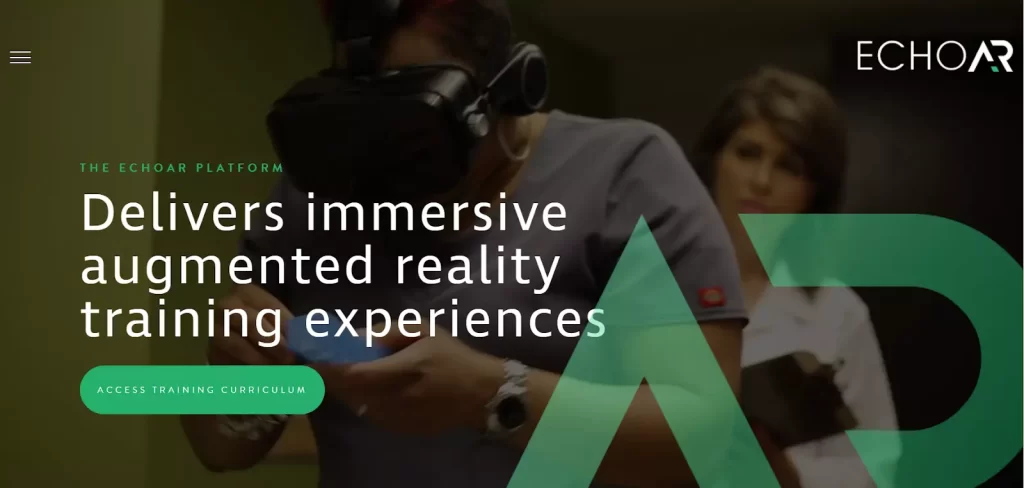
A cloud-based AR/VR development platform that provides various tools and server-side infrastructure for helping developers and companies to build and deploy 3D models.
EchoAR provides a highly efficient development and delivery process with its flexible cloud infrastructure and initiative content management system. The platform enables VR developers to create and deploy VR models to their preferred VR devices.
The EchoAR offers many useful features, such as
- Automatic app analytics collection
- Conversion of 3D models between several formats.
- Reduce the size of the app by uploading 3D files to the cloud
- Auto-create webAR connections
10. Maya
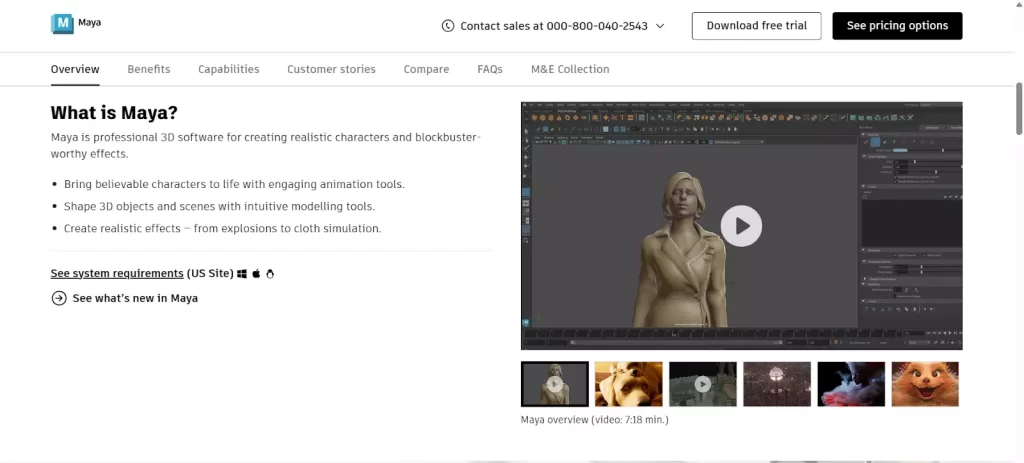
Maya is another professional VR development tool from Autodesk for producing 3D animations. The platform enables developers to design motion graphics, 3D animation, and VFX software.
The tool provides dynamic editing and development of 3D models to provide special effects and realistic animations.
The platform facilitates many features for developers, such as:
- Creating physically accurate simulations in a single visual programming environment.
- Quick loading and editing large datasets directly with data using native tools.
- Nondestructive, clip-based nonlinear editor for editing high-level animation
- Graphical representation of scene animation for creating, viewing, and modifying animation curves
- Creating 3D models using geometry based on vertices, edges, and faces.
- Construction of 3D models from geometric primitives and drawn curves.
- Sophisticated skeletons and characters’ creation
Conclusion
Virtual reality technology has impacted many businesses and industries in recent years. Developers can access various tools and platforms for creating and delivering an immersive virtual reality experience to their users.
However, selecting the best VR tools for development depends on the projects’ requirements and specific needs.
There is the involvement of many factors that can help developers to select the best VR tools, such as development expertise, project requirements, targeted VR platform, and available resources.
Therefore, it becomes crucial to consider the above-mentioned factors for selecting the best tools that align with your specific goals and constraints. Additionally, staying updated with the advancements and latest trends in the VR industry will help you make informed decisions regarding the best VR tools for your project.
Partnering with a reliable VR development company such as Idea Usher can help you simplify the process of selecting the best VR development tools.
Moreover, the company can help you identify your project scope to deploy your VR software to your target market.
We understand the importance of creating VR apps that stands out. Therefore our team works closely with our clients to know their requirements and design a virtual world tailored to them.
So, if you’re seeking an organization to help you develop a virtual reality application, look no further than IdeaUsher.
Here is more information about our VR development services.
Contact Idea Usher
Work with Ex-MAANG developers to build next-gen apps schedule your consultation now
FAQ
Q. What is VR?
A. VR is a technology that creates an immersive virtual environment through computer-generated 3D graphics where players can interact with other users and their surroundings.
Q. Are their tools for VR development?
A. There are many tools available for VR development, such as Unity, Amazon, Sumerian, Unreal Engine Four, Blender 3DS, Max Cry Engine, SketchUp Studio E, Co Armagh, Google VR for Everyone, etc.
Q. What are some use cases of virtual reality?
A. There are various use cases of virtual reality across different industries, such as training, real estate, travel, healthcare, retail, military, entertainment, etc.
